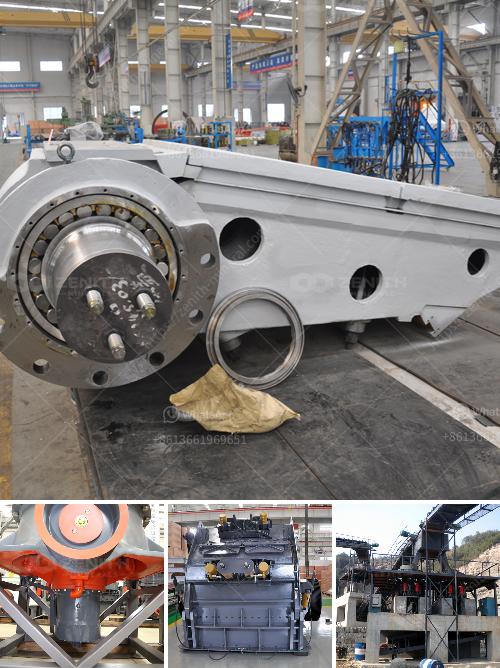When a ball mill experiences a "belly bulge," it typically means that the mill is overloaded with material, causing it to swell and potentially leading to operational issues. This condition can be detrimental to the efficiency and longevity of the mill. Here are detailed steps and considerations to address this issue:
1. Identify the Cause
- Material Overload: The most common cause of a belly bulge is an excessive amount of material inside the mill. This can happen due to an increase in feed rate or a decrease in the discharge rate.
- Inadequate Grinding Media: Insufficient grinding media (balls) can lead to poor grinding efficiency, causing material to accumulate.
- Operational Parameters: Incorrect mill speed, feed rate, or other operational parameters can contribute to the problem.
2. Immediate Actions
- Stop the Mill: If a belly bulge is detected, the first step is to stop the mill to prevent further damage.
- Inspect the Mill: Conduct a thorough inspection to determine the extent of the bulge and identify any potential damage to the mill lining or other components.
3. Adjust Feed Rate
- Reduce Feed Rate: Gradually reduce the feed rate to allow the mill to process the existing material. This can help in reducing the load and alleviating the bulge.
- Monitor Discharge: Ensure that the discharge rate is adequate to prevent material buildup.
4. Optimize Grinding Media
- Check Media Levels: Verify that the grinding media levels are appropriate for the mill's operation. Insufficient media can lead to poor grinding efficiency.
- Add Media if Necessary: If the media levels are low, add more grinding balls to improve the grinding action and help reduce the material load.
5. Adjust Operational Parameters
- Mill Speed: Ensure that the mill is operating at the correct speed. Too high or too low speeds can affect the grinding efficiency and lead to material buildup.
- Water Addition: If the mill uses water for grinding, adjust the water addition rate to help with material flow and prevent clogging.
6. Regular Maintenance and Monitoring
- Routine Inspections: Conduct regular inspections of the mill to detect any signs of overloading or other issues early.
- Monitoring Systems: Implement monitoring systems to track the mill's performance and detect any deviations from normal operating conditions.
7. Consult Manufacturer Guidelines
- Follow Manufacturer Recommendations: Always refer to the manufacturer's guidelines and recommendations for operating the mill. They provide specific instructions tailored to the equipment.
8. Training and Procedures
- Operator Training: Ensure that all operators are adequately trained to recognize the signs of a belly bulge and know the appropriate actions to take.
- Standard Operating Procedures: Develop and implement standard operating procedures (SOPs) for dealing with overloading and other common issues.
Conclusion
Addressing a belly bulge in a ball mill requires a combination of immediate corrective actions and long-term preventive measures. By understanding the causes, adjusting operational parameters, and maintaining regular inspections, you can minimize the risk of overloading and ensure the efficient operation of the mill. Always prioritize safety and follow the manufacturer's guidelines to protect both the equipment and the operators.

